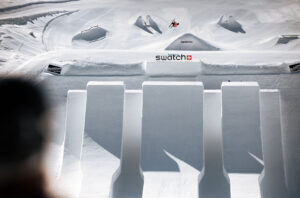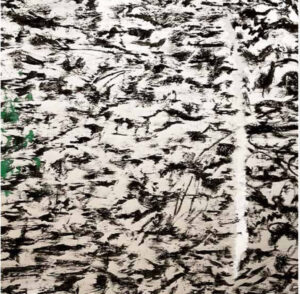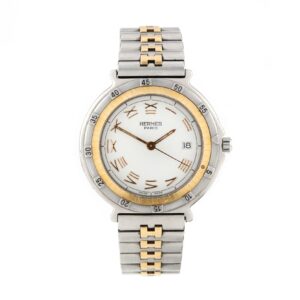

In the alpine backdrop of the Swiss Bernese Alps, where the cragged cliffs of Schilthorn dare the sky itself, a different kind of avalanche erupted in spring 2025—not of snow, but of likes, shares, and high-octane energy. It was here that skier Luca Harrington, one of freestyle’s most magnetic rising stars, filmed what is now being hailed as the most iconic “Instabanger” of the season—a near-mythic short-form masterpiece that merges athleticism, social engagement, and cinematic adrenaline.
Partnering with The Nines, one of the world’s most progressive freestyle and snowpark experiences, Harrington dropped in not just to shred—but to collaborate with his followers. The concept was deceptively simple: Harrington scrolled through hundreds of fan-submitted trick suggestions via Instagram comments, curated the best ones, and unleashed them one by one across the surreal topography of The Nines setup. The result? A viral fusion of community-driven performance and elite-level park riding that shattered expectations—and sparked global conversation.
The Nines: A Gravity-Defying Playground
For the uninitiated, The Nines is not just another snowpark event. It’s the blueprint for the future of freestyle—a snow-sculpted dreamscape designed each year in collaboration with elite athletes, visionary engineers, and creative filmmakers. Rather than standard competition formats, The Nines offers riders a canvas: no pressure, no bib numbers, just the freedom to create, collaborate, and capture magic.
Set high above the Lauterbrunnen Valley, Schilthorn’s geometry is otherworldly. This year’s course included towering step-ups, curved wallrides carved from glacial ice, and a now-legendary quad-kicker booter nicknamed “The Horizon,” which became the centerpiece of Harrington’s Instabanger. Snow was trucked in and chiseled to architectural perfection—every rail, spine, and quarterpipe designed not just for difficulty, but for visual impact.
Harrington’s Digital Brief: Turning Comments into Content
Harrington, already a familiar name among the Freeride World Tour faithful and X Games hopefuls, didn’t just show up to showcase tricks—he invited his followers to co-author them. In an Instagram story post pinned weeks before The Nines kickoff, Luca typed:
“Drop your dream tricks in the comments. I’ll try to send as many as I can at The Nines. Let’s make an Instabanger together.”
It was more than fan service. It was participatory performance. Within hours, the post was flooded with trick ideas:
- Cork 1260 blunt off the spine
- Switch 450 on pretzel 270 out on the down-flat-down
- Misty 900 over the quarter-to-wallride gap
What could have been gimmicky was, under Harrington’s disciplined eye, transformed into a visual mission brief—a crowdsourced session list that felt deeply democratic, yet filtered through the precision of a world-class technician. Each trick wasn’t just a challenge. It was a dialogue, an act of recognition between creator and community.
The Sessions: Heat, Repetition, Flight
Harrington’s approach to execution was surgical. Each morning at Schilthorn began with an evaluation of the course’s texture—wind shear, melt rate, and temperature gradients all mapped. Then came the tactical layering of tricks by terrain: high-impact aerials for mid-day prime light; rail sequences for the afternoon when shadows offered dramatic contrast.
In one session, Harrington dropped a triple cork 1440 safety over “The Horizon,” carving a perfect arc against the blue sky before sticking the landing so cleanly that park staff reportedly broke into applause. Another moment saw him buttering into a switch 270 on, backslide, to fakie on a kinked rainbow rail—while wearing a GoPro chest rig that captured the rider’s-eye drama in dizzying detail.
The repetition required was staggering. Tricks often took 12–15 attempts, each slightly recalibrated: more pop, less carve, quicker grab, softer stomp. Yet Harrington’s endurance never flagged. If anything, he fed off the algorithmic hunger—the idea that somewhere, thousands of followers awaited the drop.
The Cinematics: Making It a Banger
An “Instabanger,” by definition, is more than raw talent—it’s edited velocity. Music, pace, framing, and cut timing are as crucial as the nose grab or the cork rotation. For this, Harrington collaborated with acclaimed drone cinematographer Léo Rast, whose dynamic aerial filming has been featured in Red Bull campaigns and Patagonia short films.
Together, they mapped a three-day shoot, syncing each line with pre-mixed tracks built by Berlin-based producer NEYA, known for his glacial beatscapes and ambient tempo modulation. The idea was to blend the kinetic and the cinematic—each shot transitioning like a punchline, but with visual poise.
The final edit, uploaded at 6:09 PM CET on April 22, was one minute long. Within 24 hours, it reached 2.1 million views. The caption read simply:
“You called it, I sent it. Shoutout to The Nines. #Instabanger”
Community Reaction: “The Most Democratic Freeski Edit Ever”
The skiing world erupted—not just with applause, but with analysis. Major action sport platforms reposted the reel, influencers dissected it in frame-by-frame breakdowns, and followers began guessing whose comment had inspired which trick. Some dubbed it “the most democratic freeski edit ever.” Others praised Harrington for blurring the line between athlete and entertainer.
Even competitors chimed in. Freestyle skier Kelly Sildaru reposted the clip, tagging Harrington with:
“🔥🔥🔥 Trick selection is unreal. That cork 9 nose was surgical.”
It wasn’t just the tricks themselves—it was the act of collaboration, the signal that fans weren’t just spectators, but co-directors.
Reframing Athlete-Fan Relationships
In a digital landscape often clouded by parasocial overreach or influencer fatigue, Harrington’s Instabanger felt fresh. It didn’t exploit his following—it activated it. The comments were a script, and he was both actor and director.
This model—of participatory performance—may well redefine how athletes in non-mainstream sports maintain relevance. Without massive league franchises or weekly televised coverage, action sports depend on moments. Harrington understood this. He didn’t just produce a viral clip—he gave his audience authorship.
Why This Matters: The Culture of Now
In 2025, content isn’t king—connection is. Audiences don’t just want to watch—they want to vote, contribute, remix. And in that context, Harrington’s Instabanger is a case study in cultural fluency.
It also arrives at a critical moment for skiing. As climate realities shorten seasons and reduce natural snowfall, the sport must adapt. Events like The Nines, which offer sculpted, creative terrains and digital-first storytelling, are the new frontier. Luca Harrington didn’t just ride it—he translated it.
The Aftermath: What Comes Next?
Following the viral success, rumors have already surfaced that Harrington may headline a short-form digital series backed by Red Bull Media House, blending travel, sport, and community-driven trick planning. Meanwhile, The Nines has confirmed that a 2026 return to Schilthorn is already in the planning phase—this time with live comment integration planned via Twitch and Instagram Threads.
Harrington remains coy. When asked if the Instabanger model would become a recurring format, he replied:
“That’s up to the people. I’m just riding their ideas into the sky.”
A Moment Made by Many
In a world saturated with one-way media, Luca Harrington’s Instabanger was something rare: a shared gesture of digital improvisation, born of pixels and snow, curated by one rider but authored by many. It’s a reminder that the future of sport isn’t just in the legs—it’s in the loop.
And somewhere between a cork 1440 and a slow-motion rail slide, a new kind of legend was born—not just of the mountains, but of the timeline.
No comments yet.








